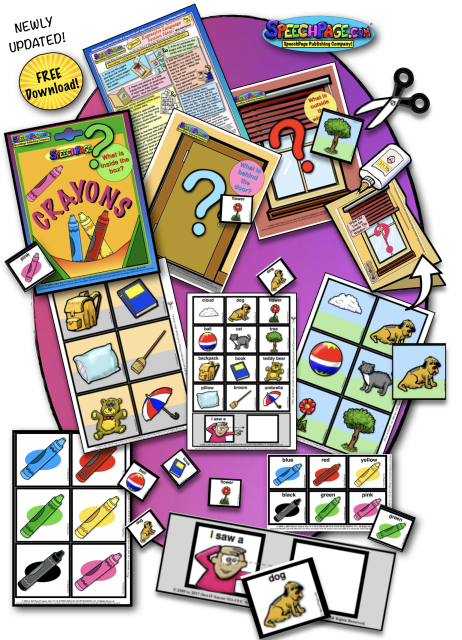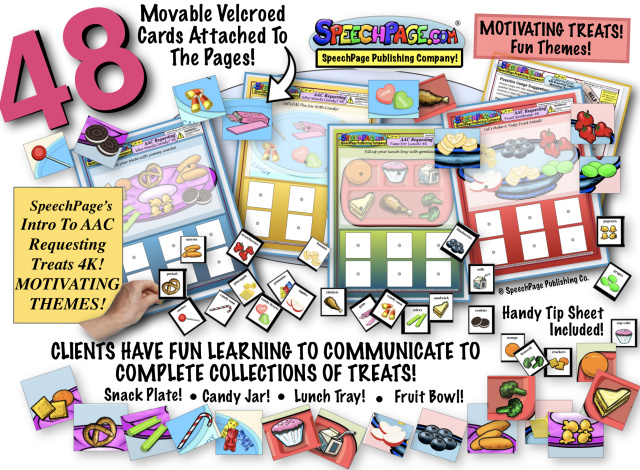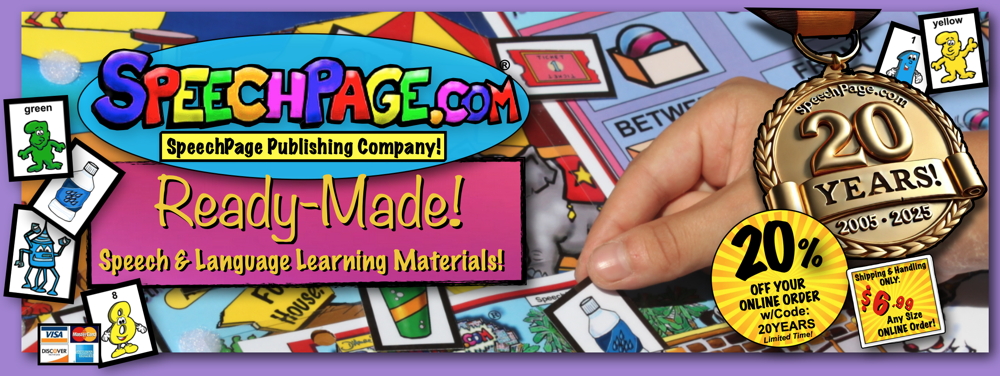February 17, 2019
FOCUS ON EXPRESSION:
Communicating Better!
Using AAC & Visual Communication Symbols To Teach Expressive Communication!
By: Don D’Amore MA CCC-SLP Speech Language Pathologist
There was a phrase I heard when I first started working as an educator many years ago: “We learn to read, so we can read and learn!” (We also know that students are still learning while they are at the same time learning to read.) I think of expressive language in a similar way for our students who are showing less verbal communication than their typically developing peers. We use strategies of Augmentative Alternative Communication (AAC) to assist the person who is less-verbal with learning additional modes of communication. I am an SLP with many, many years of direct experiences working in a large urban school district with hundreds of children, (and working part-time with adults as well). I often caution teams that AAC is not just something we use to replace verbal speech. I strongly believe it can be used as a strategic tool to assist most children who start out as non-verbal with ways of understand expressive language better and ultimately lead to verbal speech (if they are capable of producing it). Focusing the goal for a child (who is physically able to speak) to eventually be verbal, puts the real emphasis on that they will someday use their own verbal speech and not just learn the AAC system. I realize that verbal speech may not be possible for some students. For those students the AAC systems they are learning will be their primary method of communicating. However when we focus on the learning of expressive language as the goal and not just the learning of specific systems of the AAC, the target we all really want to achieve (of self-suffice verbal speech) is now better set. Without expressive communication, learning anything can be quite limiting. Thinking of AAC as a bridge to better expressive language and hopefully verbal language. I suggest teaching AAC methods as “Learn to communicate, so you can communicate ...and also learn better!”
When we look at many "Language Development Charts" the charts tend to rank the earliest stages by counting the spoken words the child says at certain age norms. How do we assess language abilities and growth for the children who are not yet using verbal words? There is a large spectrum of abilities for these students, yet they all may end up incorrectly being measured as the same when it comes to only looking at 'spoken-word' counts. There are several stages of language growth before words are even used so only counting spoken words would not account for this ability. These stages typically involve using behaviors to interact with the environment and with others. An individual with ASD (and some other disabilities) who doesn’t fully understand the concepts of language through using verbal words may sometimes display many physical behaviors. Often these actions are what others might consider ‘unacceptable’ or ‘unconventional’. These may occur as they try to get what they want (or perhaps get out of what they don’t want), or as a way of reacting to a sensory overload, or to seek attention or for many other reasons. Frequently their ‘unconventional’ behavior will help them accomplish what they wanted, and those behaviors are then used again and again. While this may sometimes work for the person for now, we find it will not work well in the long term. There are many aspects in the life ahead of them that requires participating in the world with others who may not understand or accept these types of behaviors. (A wonderful online free reference and assessment tool for professionals and families regarding an easier understanding of the communication status and progress of anyone functioning at the early stages of communication is: The Communication Matrix!)
Communication is essentially exchanging a mutually understood message between two (or more) people. If someone (such as a caregiver) is very familiar with the individual, that caregiver may feel they can determine what the person is “conveying” when they use ‘unconventional’ behavior, but this will be subject to the interpretation (or misinterpretation) by the caregiver. For example lets say there is child who is not speaking and who is repeatedly pounding a table. A parent may say: “When he pounds the table like that, it means he wants me to bring him his snack”. However because this child was displaying only a “table pounding behavior” and not a clearly understandable recognized “word” there could be many other reasons or meanings for the table pounding action (such as feeling a pain, or not wanting to be at the table, etc.). Clearly this child pounds the table in frustration as they may not know what else to do about the problem. While this could be considered a form of a communicative intent that a familiar person may do their best to interpret, there was no use of actual words. Without mutually understood expressive messages (such as verbal words or picture symbols) the result can be continued frustration and misinterpretation even between the most loving parent and child. A person unfamiliar with the individual may be totally unable to understand what some ‘unconventional’ behaviors convey. Clearly using words and/or picture symbols that we all understand would be more effective for communicating than interpreting such behaviors.
Verbal Language is abstract! Make it concrete to help learn it! As we are first learning to use words to express ourselves, we start understanding that there are these abstract concepts (words) that everyone mutually understands as representing something to everyone else. If someone says ‘vanilla ice cream’ we immediately visualize it in our mind. We can understand what they are referring to even though it is not actually in front of us to see it. As discussed, the individual with ASD (and some other disabilities) may struggle understanding those abstractions represented by verbal spoken words. Yet they could have a very good understanding of the actual visual picture of the item. Learning to use picture communication symbols to represent what they are trying to express can help a person right now, and may also help grow their overall understanding of language. While there can never be any guarantees, hopefully more verbal speech will also emerge as the person understands how communication and exchanging words with others works for them to make their world a less frustrating place.
Many people with ASD may not be using verbal speech at ages when neurotypical peers are already speaking. There are several aspects of the disability of ASD that can contribute to this resulting limitation of a person’s verbal speech. Among the most pressing issues: weaknesses in social language such as some understandings of how language interactions work through a social exchange. Sensory integration issues (if present) may also interfere with opportunities to learn language due to the person’s overwhelming response to them. There may also be motor planning issues, and the difficulty of understanding complex abstractions involved in language concepts. As there are clearly many different issues contributing to a person with ASD not expressing themselves well with verbal words, there is no one-solution that can be a quick remedy. While there are many different aspects of the disabilities involved with ASD contributing to the reason they are not verbally speaking, strategically teaching the use of visual picture symbols can assist with a person with gradually learning how language works and how they can use it effectively.
Picture symbols present a visual depiction of the word they represent. This helps a person with understanding of the abstract meanings of a verbally spoken word by itself. A cut-out picture symbol can be held in a hand and used in a communicative exchange with someone as part of teaching functional understanding of communication. (The most common method for this is the Picture Exchange Communication System (PECS) developed by Pyramid Education Consultants. Please refer to this company for further information on this method to teach functional communication. This company is not affiliated with this article or the author.)
For those individuals who understand that pointing to a symbol can express their message, the symbols can be arranged in a display such as using vinyl pocket pages with the symbols in the pockets. Or the symbols can be attached with velcro dots to a display surface for pointing and/or exchange. The communication symbols can be attached with velcro to introductory type voice output communication devices, to represent the message that is activated on the device. Pairing the picture symbol with the verbal message produced by these devices may help the user to understand the verbal word associated with their expression they are producing using this equipment.
MAKE IT FUN!
MOTIVATION IS A KEY TO LEARNING COMMUNICATION!
A child without disabilities is usually motivated to practically teach themselves to communicate in spoken language in order to be a part of the social language world in which they are eager to participate! Many of our students with disabilities may not be as aware of (or motivated by) all of the social benefits of verbal language. Without that intrinsic social driven motivation, we as their teachers now need to create other motivating circumstances in which they are then eager to learn verbal language through their participation.
For example, take a favorite activity such as a large piece puzzle and make the interactive communication exchange to acquire the puzzle pieces a perfect gateway to communication using AAC method. This is quite a powerful langauge learning activity for the right student. Other favorite interactive activities such as blowing bubbles and building block towers lead to multiple communication opportunities from AAC use and verbal attempts.
It is highly recommended that a certified professional such as a Speech Language Pathologist (SLP) experienced in working with individuals with these abilities and disabilities be involved with the team assisting the person in learning to communicate. SLPs are specially trained to bring the needed guidance to the complicated process of teaching communication to a person who has not shown verbal speech. The strategies involved and the types of Augmentative/Alternative Communication (AAC) are vast. As with most ways of teaching, there is no ‘one size fits all”. An SLP’s expertise can assist the team to use more effective and proven methods such as picture communication symbols to strategically help the person learn to express themselves in a function manner!
Looking for ideas for teaching expressive language growth for beginning communicators? Please feel free to download my FREE TEACHING MATERIAL:
SpeechPage_FREE_EXPRESSIVE_REPORTING_W_AAC!

SpeechPage.com Publishing Company offers many materials for sale that are LOVED BY SLPs!
Check out the AAC & Autism SpeechPages! area for great therapy materials that come ready made and ready to use!
I have created over a DOZEN Ready-Made, Ready-To-Use AAC Language Learning Sets! Here is a sample of a newer one:
*NEWER SpeechPage Item* Intro To AAC Requesting Treats 4K!

48 laminated and velcroed cards come with this Unique Hands-On INTERACTIVE LEARNING set!


